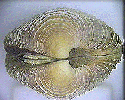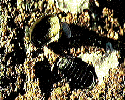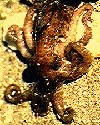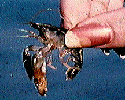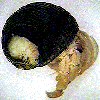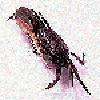Molluscs and Jointed Legged Animals
Be sure to write about what you are learning in the lab section of your notebook. You will be expected to answer questions about the lab activity during the lab self test and lab quiz. It helps to have your text and coloring books open beside you for support.
| Refer to the Assigned Readings Below: | |
| Marine Biology Textbook | Chapter 7, pages 130 to 139 |
| Marine Biology Coloring Book | Plates 29 to 37 |
|
Phylum
Mollusca (soft bodied animals): Snails, Slugs, Chitons, Clams, Mussels,
Oysters, Squid, and Octopi
|
||
|
1.
The shells of bivalves have two parts, called valves, connected
together by a ligament.
|
||
|
2. Most bivalves are filter-feeders that use their gills to collect phytoplankton and other food particles from the water. |
||
|
3. Mussels are unusual bivalves that attach themselves to the bottom with threads of protein called byssal threads, produced by a gland located near the base of their foot. |
||
|
4. Most marine snails have a tough, proteinaceous structure called the operculum, carried on their foot and used to shut the shell aperture. |
||
|
5. The shells of most gastropods have a spiral shape. |
||
|
6.
Many shell-less gastropods are brilliantly colored, warning predators
of their bad taste.
|
||
|
7. Chitons have 8 overlapping shell valves that cover their backs. |
||
|
8. Chitons have a broad, muscular foot on their underside that is used for clinging and crawling. |
||
|
9. Chitons are restricted to living on hard substrates. |
||
|
10. The nautilus is the only living cephalopod with a large, external shell. |
||
|
11. Squids can swim rapidly by using water for jet-propulsion. |
||
|
12. The suckers on the arms of an octopus are arranged in 2 rows. |
||
| Lab Activity 4.2 Complex Worms and Lophophorates |
Lab Activity 4.4
Spiny Skinned Animals and
Chordates
|
